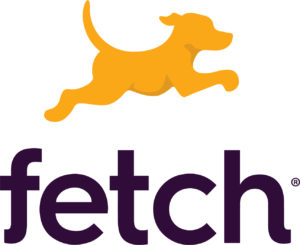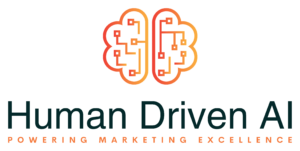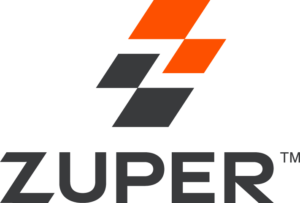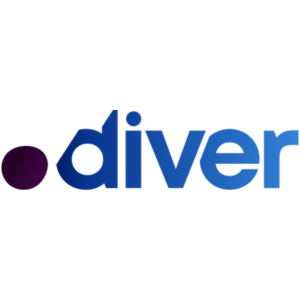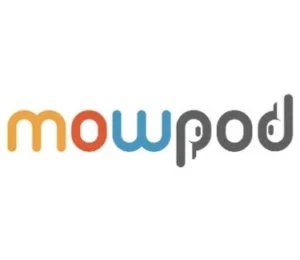Why cloud technology supports the digital advertising industry holistically
Paul Ryan
OpenX

- Part 1 Why cloud technology supports the digital advertising industry holistically
- Part 2Why Prebid should be top-of-mind for publishers
Show Notes
Quotes
-
“OpenX is a programmatic ad exchange. We connect publishers, web publishers, mobile apps, CTV, folks that want to advertise and generate revenue with marketers, brands, agencies, and through DSP (Demand Side Platform) like the Trade X and variety of others.” -Paul“We offer a platform that has high-quality connections in terms of fraud reduction and what-have-yous but also privacy compliance and inside into actually the audiences that marketers are actually attempting to buy.” -Paul“We don’t have a dog in the fight in terms of the identity wars if you have heard about what’s going on, we are pretty agnostic there. We have something called Open Audience where we use almost anyone’s ID to actually identify and target audiences for marketers directly through the exchange which is a lot more efficient than potentially doing it at the edges of the ecosystem.” -Paul“There is the public cloud which would be the usual suspects, Amazon or AWS, Microsoft with Azure, and Google with GCP. So we are talking about publicly accessible compute networking and storage resources that you pay for on a per-use basis. You are transforming how you actually think about what you’re doing into I am doing more activity, therefore, I pay more and when you’re doing a low activity you actually pay less.” -Paul“That is one of the key features of the cloud, you pay for what you use. Becauseof that, combined with the fact that programmatic AdTech is incredibly bursty four and five times from peak to trough in terms of ad requests, big requests going into DSPs, ad request that we would get from our publisher network, it’s very bursty.” -Paul“What I’m hearing is cloud computing is essentially somebody else, like Microsoft, Google, and Amazon where they are basically owning servers that companies can tap into and they are moving their business model in terms of paying for storage of processing power off of their premise so they don’t have to own the hardware and they don’t have to manage it but they are paying for the capacity. Every time an interaction happens, there is some cost associated with it.” -Ben“There are attending costs issues with the cloud but with the cloud, your product development lifecycle shrinks massively versus having to buy capacity for new things or squeeze in something new in a fixed amount of capacity you have. Because at any moment in time if you own servers and co-locations around the world, you have a fixed amount of capacity at that moment.” -Paul“With a cloud, there is no fixed amount of capacity, if have traffic doubles on me we just scale up the number of instances and it just works. There is a whole huge amount of work that you don’t have to do anymore, you have to factor that in. You can focus more on the product development lifecycle not fighting your servers.” -Paul“The benefit of being a cloud-based product is, first off it eliminates your capacity constraints, you are faster to get to market, you can handle bursts if you’re not having a lot of demand you are hopefully having some cost savings.” -Ben “There is a threshold when it starts being really economic to do. If you have a couple of servers in your house, the cloud is going to be a lot easier to use and you can try new technology immediately. But all things being equal, you are probably going to be cheaper with your one rack of servers over the next set around 65,000 servers worldwide and 5 co-location facilities.” -Paul “In the grand scheme of things, in the universe where the Amazons and the Google (the latter actually builds their servers), they buy servers in quantities of a million. So you can understand you’re not getting in at the greatest price for your 500 servers per hardware purchase so you add an economic disadvantage in terms of getting great pricing.” -Paul “We saw the actual volume of inbound requests growing at a 100% year over year for the past three or four years and then obviously with the COVID crisis there has been a pretty remarkable bump in the amount of traffic that is being generated albeit not commensurate to the rate of revenue so just have to be more efficient.” -Paul “So you are saying that during the COVID crisis you saw more traffic but you are seeing less monetization, less revenue being driven. That infers that there are more people using online services consuming ads, there’s less competition for people that are buying ads.” -Ben “The actual overall spend is down but the volume is up and when that occurs, you just have to get more efficient. You have to have your cost per handling a transaction, we actually use cost per billion as our metric and we have to keep driving that lower and lower going forward. It is much easier to do that by testing and trying new approaches to a platform in the cloud, it’s very quick. So we have iterated in cost optimization over the past 12 months of being in GCP we reduced our cost a tremendous amount per unit.” -Paul “Everyone wants to have access to the user interaction and those volumes monotonically increase saying they want to see them but not necessarily bit on them and actually get somebody at that interaction.” -Paul“We have to be able to support these volumes albeit there being duplicates of things that are being addressed by the SPO (Supply Path Optimization) initiatives. From the demand side, the marketer side people are choosing paths to the actual publisher and end-user that makes sense. The ecosystem, as itis now, has many paths from the actual marketer to the actual user on a website or in an application.” -Paul“The applications and the websites themselves might use two or three different paths to offer that inventory so that is multiplying the inventory and that happens at multiple layers through the adtech ecosystem or the programmatic ecosystem. By the time it hits the marketers, it’s the same person and the same page view and you might get solicited 10X for it just because of all these other paths.” -Paul“Supply Path Optimization is an attempt from the marketer and from the demand side to make those paths a little bit simpler so you understand them and then frankly you don’t have to handle 10 looks at every impression which is incredibly inefficient. Everyone has kind of reduced the multiplicative nature of what is going on in programmatic and you should care because unless people are investing in radical ways to reduce their cost, you are not going to be able to survive nor offer marketers a fair deal in the SPO universe.” -Paul“What I am hearing is you are looking at a paper map there are five different ways to get to your end destination and you have to figure out which one is actually going to be the fastest and most efficient such as the speed limits, what roads you’re taking, and how much traffic there is because that is not calculated for you in the programmatic advertising.” -Ben “Amazon has been in the public cloud space for a very long time. I have used them several times in my career at this point. They are a great product, very stable, and has a hugefootprint worldwide. As the dominant player as in more than 50% of the marketplace, they are somewhat flexible in dealing with companies in terms of pricing, negotiation, and stuff like that.” -Paul“For OpenX, we actually did a POC for all three, just this key parts of our platform to see how they would work in scale in different clouds and we came up with the conclusion that the basic capabilities were all there, there is more familiarity withAWS to be honest because everyone has used it at some point but then we started negotiating pretty heavily and ended up with a longer partnership with Google and frankly it hinged on a lot of capabilities that we are using today with respect to their tensor flow infrastructure.” -Paul
- Part 1 Why cloud technology supports the digital advertising industry holistically
- Part 2Why Prebid should be top-of-mind for publishers
Up Next:
-
Part 1Why cloud technology supports the digital advertising industry holistically
Today we're going to discuss how cloud computing integrates into your ad tech solutions. Joining us is Paul Ryan, the Chief Technology Officer at OpenX, which is the world's largest independent ad exchange. In part 1 of our conversation, we're going to discuss why cloud technology supports the digital advertising industry holistically.
-
Part 2Why Prebid should be top-of-mind for publishers
Today we're going to discuss how cloud computing integrates into your ad tech solutions. Joining us is Paul Ryan, the Chief Technology Officer at OpenX, which is the world's largest independent ad exchange. In part 2 of our conversation, we discuss why prebid should be top-of-mind for publishers
Play Podcast




